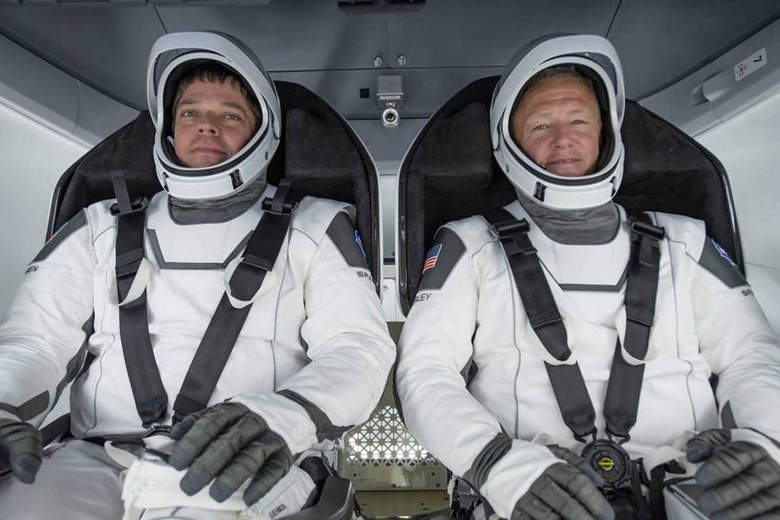NASA And SpaceX Make History: Crew Dragon Launch Goes Like Clockwork
NASA and SpaceX have made space history, with the Crew Dragon spacecraft carrying two American astronauts safely blasting off from Kennedy Space Center in Florida today. The launch had been delayed, after plans last week had been scrapped at the last minute because of inclement weather.
Saturday afternoon in Florida looked as though it could stage a repeat of that, but in the end the Falcon 9 rocket got the green-light to launch. That took place from Launch Pad 39A at 3:22 pm EDT, and in the process gave a dramatic climax to a number of concurrent projects.
Arguably most notable, it's the official launch of the commercial crew era. That's NASA's plan to return American astronauts into space using private-public partnerships with companies like SpaceX and others. It's a stark departure from the time of the Space Shuttle, when NASA engineers took the sole lead for reaching space, and is expected to make space flight more affordable and attainable – including for private space tourists.

At the same time, it's also a huge achievement for SpaceX. Elon Musk's company has already proved its mettle with multiple uncrewed resupply missions to the International Space Station, with its Dragon capsule acting as a cargo hauler for supplies and scientific experiments. However the jewel was always to be a crewed mission.
That was the theory, anyway: the reality has been a difficult and lengthy journey, to ensure that Crew Dragon, Falcon 9, and the other components of a rocket launch are all as safe as they need to be. It's not been without setbacks, either, including issues around testing before this first crewed launch.
Today, therefore, has been a massive success and a turning point. The Falcon 9 rocket blasted off with the power of nine Merlin engines in its first stage, together generating more than 1.7 million pounds of thrust. It's a particularly risky time, given the forces involved; roughly a minute into flight, it's also when Falcon 9 reaches what's known as Max Q, or the moment where the mechanical stresses it's under are at their most powerful.
After that came the first stage separation, with the second stage – and a single Merlin engine – then responsible for taking Crew Dragon and its occupants Robert Behnken and Douglas Hurley into orbit. Twelve minutes into the flight, Crew Dragon separated safely from the second stage.

"NASA's SpaceX Demo-2 mission, a final end-to-end flight test of the company's crew transportation system, is underway with the return of human spaceflight capability to U.S. soil," NASA said of the moment. "The Crew Dragon, Behnken and Hurley are embarking on a 19-hour pursuit of the International Space Station."
While it could be quicker, NASA and SpaceX intend to take a fairly leisurely trip to the ISS. That's because they'll be using the time to test out various Crew Dragon systems, among other things. The docking – which will be completed automatically, though Behnken and Hurley will previously complete two manual flight tests to demonstrate they can safely operate the spacecraft should it encounter some sort of system failure – is schedule to take place at 10:29am in the morning on Sunday, May 31.
A little over two hours later, at 12:45pm, the hatches separating the space station and Crew Dragon will be opened. Behnken and Hurley will then become new members of the Expedition 63 crew there, joining astronaut Chris Cassidy and cosmonauts Ivan Vagner and Anatoly Ivanishin. Later, with a final date yet to be decided upon but expected to be anything from six to 16 weeks from now, Crew Dragon will be used to return both Behnken and Hurley to Earth.
Falcon 9 booster has landed on the Of Course I Still Love You droneship! pic.twitter.com/96Nd3vsrT2
— SpaceX (@SpaceX) May 30, 2020
That won't be the only achievement, mind. Another important element of today's launch was another demonstration of how SpaceX plans to retrieve – and then reuse – components involved, like the Falcon 9 first stage. That booster safely landed on the company's autonomous droneship, "Of Course I Still Love You," in the Atlantic Ocean.
